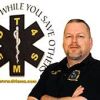I am really humbled to be a part of the movement to change the culture of safety within EMS and the fire service. When a police officer is assaulted, the assailant pays the price. When EMS providers are attacked, very little happens.
As a medic, when I was attacked, it seemed that no one cared. So I decided to do something about it. Change happens when it is personal to you. The stories that many other providers have shared about being victims of violence only strengthened my resolve to change the culture of safety as we know it.
A personal mission
Those who know me know this is a personal mission. It’s my passion, almost an obsession. Almost every day, I hear or read about one of us being assaulted. Many of the stories are worse than my personal experience. I have cried with you, got angry for you, and have grown better and stronger because of you. There is tremendous momentum now to change.
It’s OK to press criminal charges against a person who assaults you on the job. It is not just part of the job, and there are laws that prove that. Yes, it can be a pain to press charges, but do it. If not for you, do it so the rest of us can benefit. Make it a better and safer career for all those new providers who will eventually replace us.
I’ve been teaching techniques to defuse and defend against hostile behavior for some time. People laughed at me at first; they said there was no need to train EMS providers for violent encounters. Well, studies and surveys have proven there is a need, and the violence we face is real. According to the NAEMT, 4 out of 5 medics have been injured on the job — the leading cause of which (52%) is violence.[1]
According to Dr. Brian Maguire, EMS providers are 22 times more likely to be assaulted on the job than any other private sector profession.[2]
I have traveled all over the country. To date, I haven’t been at a station where there haven’t been tons of stories about being kicked, punched, stabbed by people we thought were patients. None of that behavior would be accepted in any other profession, yet some of us believe it is just “part of the job.”
It’s not. It’s simply not acceptable.
Definition of terms
When it comes to the subject of changing the safety culture within EMS regarding violence, we will have to address what I have found to be the most fundamental problem: the difference between a patient and an attacker.
This is not as simple as it sounds. Not being able to tell the difference between the two causes a conflict of mission, during and following a violent encounter. For example: An EMS provider is assaulted. Since the provider has no clear understanding of “patient” versus “attacker,” he believes that the assailant is a “patient.” So, any act of aggression is believed to be “part of the job.” The provider feels obligated to continue to engage the patient, even after being assaulted.
If the provider wished to pursue criminal charges against the assailant, they may be mocked by other staff because of the “part of the job” mentality. No criminal charges are filed, which leads to a lack of criminal prosecution. The act is essentially condoned by us.
Patient versus attacker
Let’s clarify the difference between a patient and an attacker. In order to be mentally better prepared for scene safety “tactics” while maintaining good customer service, EMS providers must have a clear separation between an uncooperative patient and an aggressive attacker.
An uncooperative patient is confused due to a true medical emergency. Examples would include postictal seizure patients, a hypoglycemic patient, a hypoxic patient, or a TBI/CVA patient.
An aggressive attacker is an intoxicated/drugged individual who uses verbal threats; attempts to grab, strike, spit or otherwise assault a provider; and places the provider in apprehension/fear for their own safety.
What doesn’t exist is the “combative patient.” Let’s define each part of the phrase.
- Patient: a person who is under medical care or treatment.
- Combative: eager or ready to fight, argue; aggressive.[3]
If EMS providers think “combative patient,” the “patient” part is what sticks in their minds. Therefore they remain connected, so to speak. Role confusion begins, which creates a dangerous environment for the provider to operate in. Is there any wonder why EMS providers wind up getting assaulted?
Once we are clear about who we are dealing with by definition, it becomes easier to manage the patient care approach. I’ll talk about that in the next article.
References
1. “NAEMT: Four in Five Medics Injured on the Job,” Fire Chief, Nov. 18, 2005. http://firechief.com/ems/naemtsurvey111805 Accessed 10/28/13
2. “EMS Occupational Risks,” Brian J. Maguire, Dr.PH, MSA, EMT-P, National Association of State EMS Officials 2009 Mid Year Meeting, http://www.nasemso.org/meetings/midyear/documents/maguire-ems-occ-risks-jun09.pdf Accessed 10/28/13


